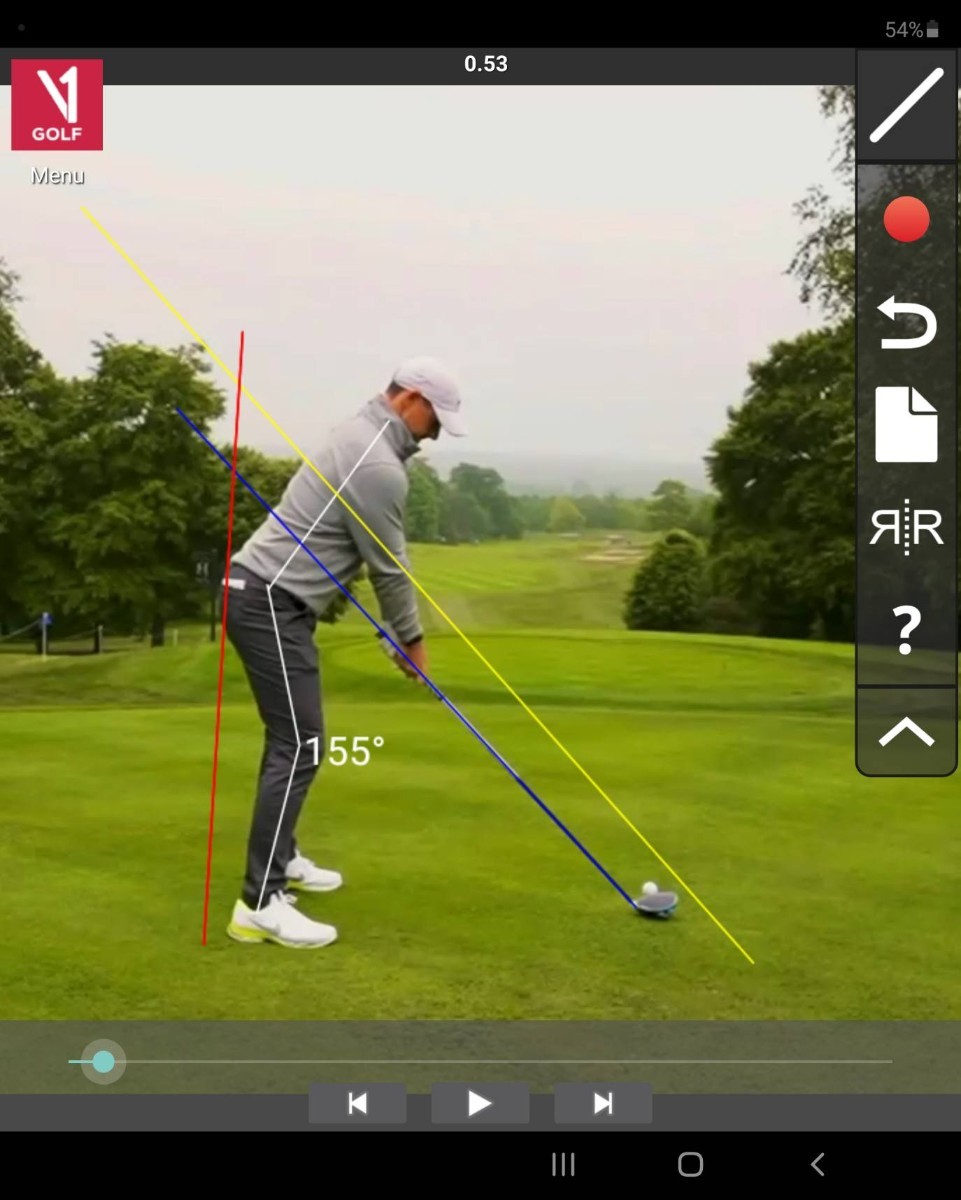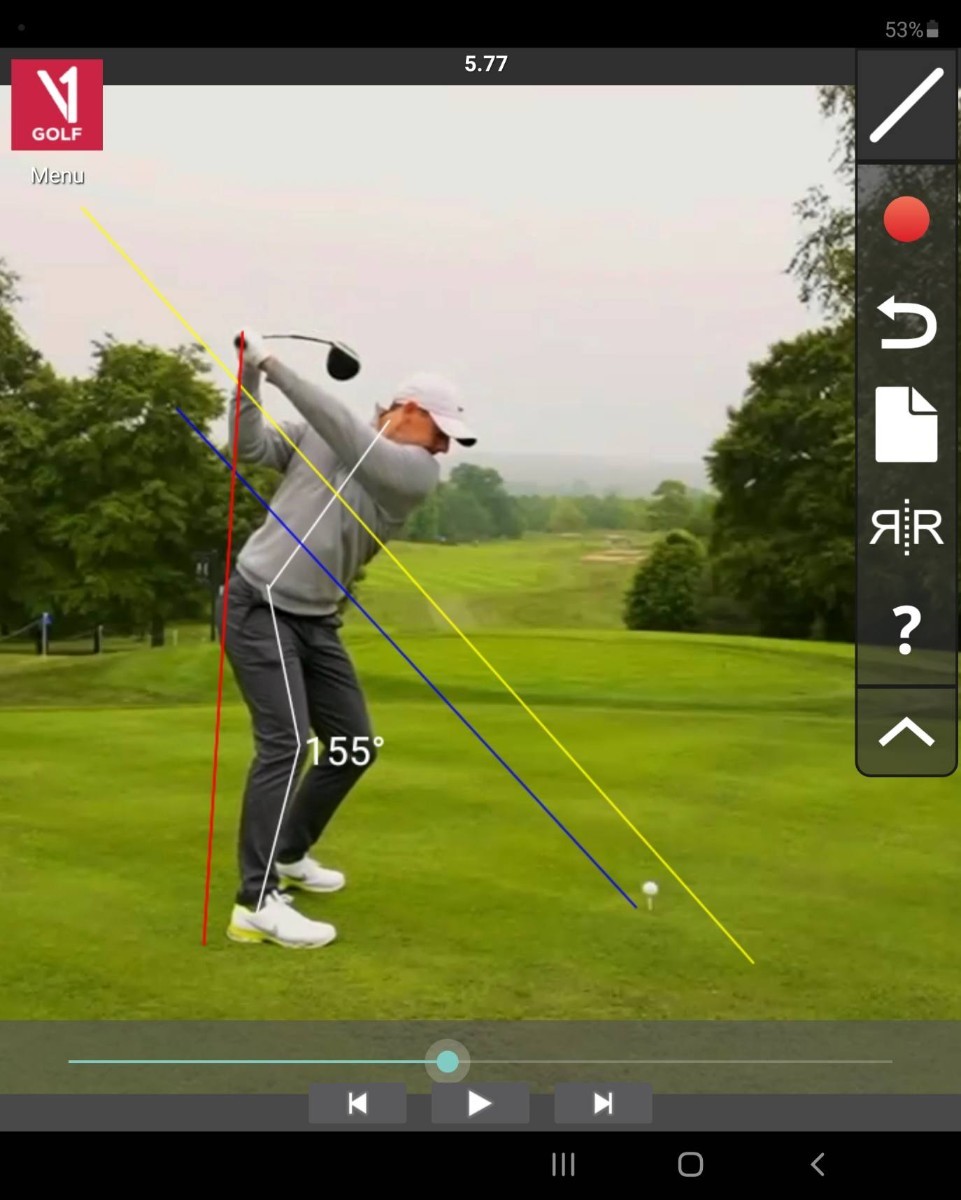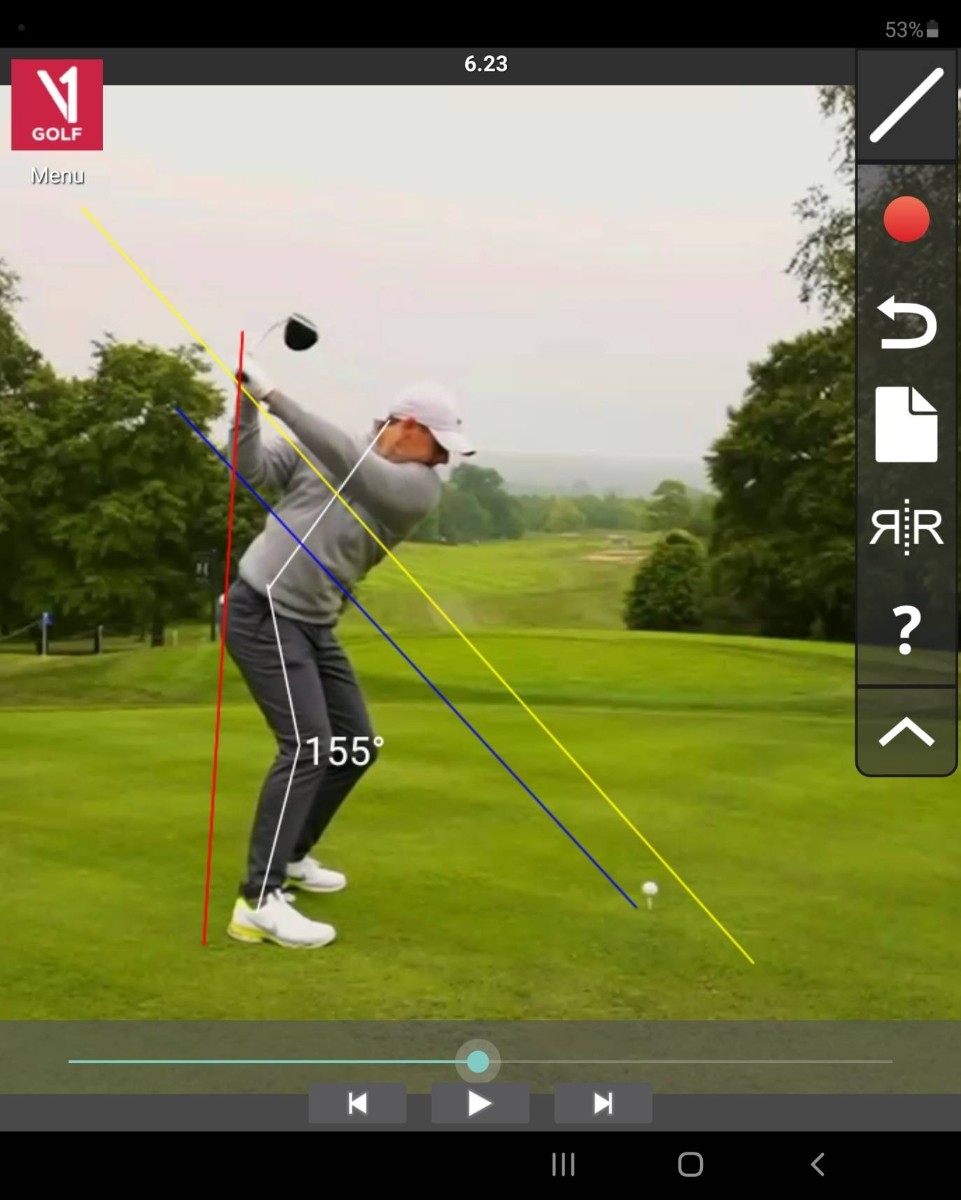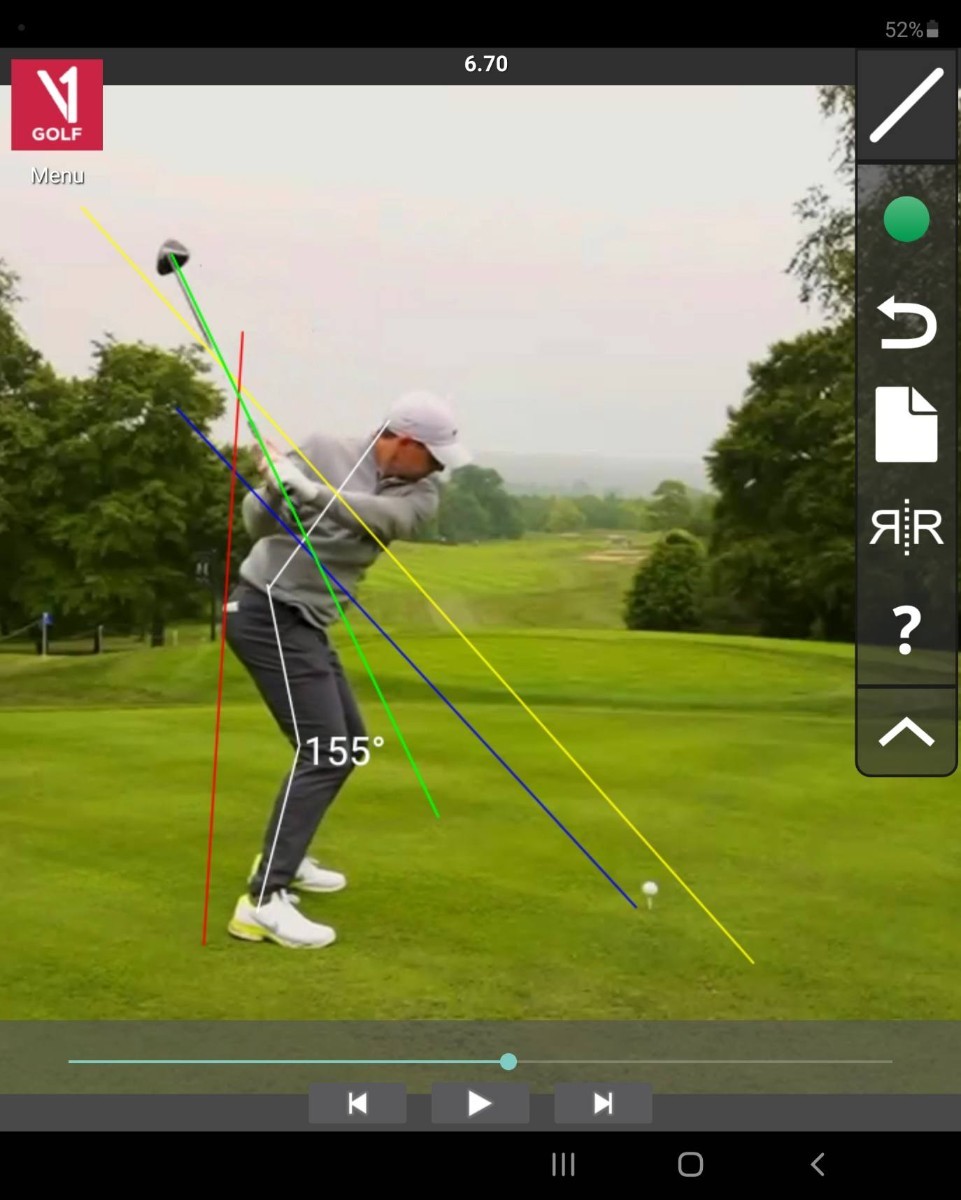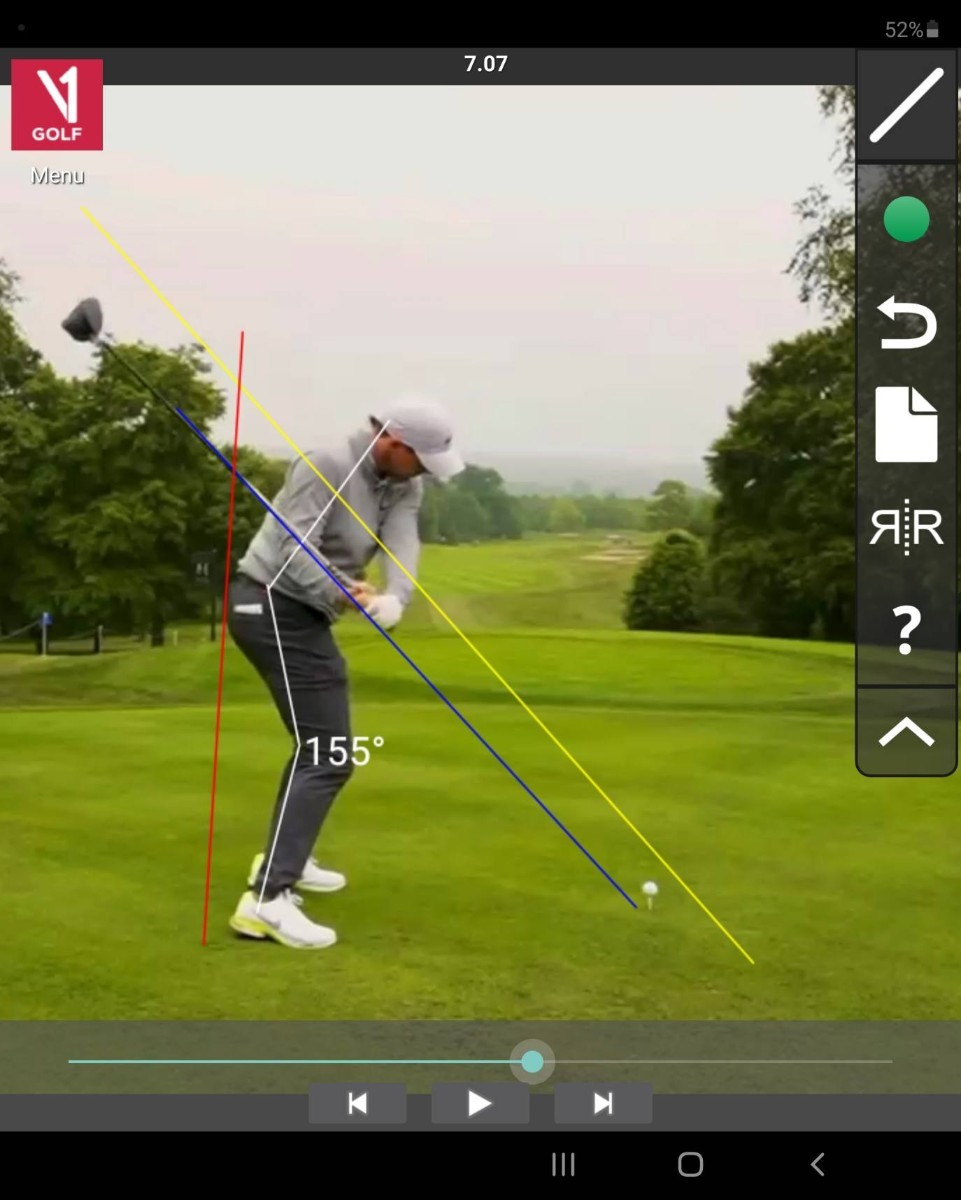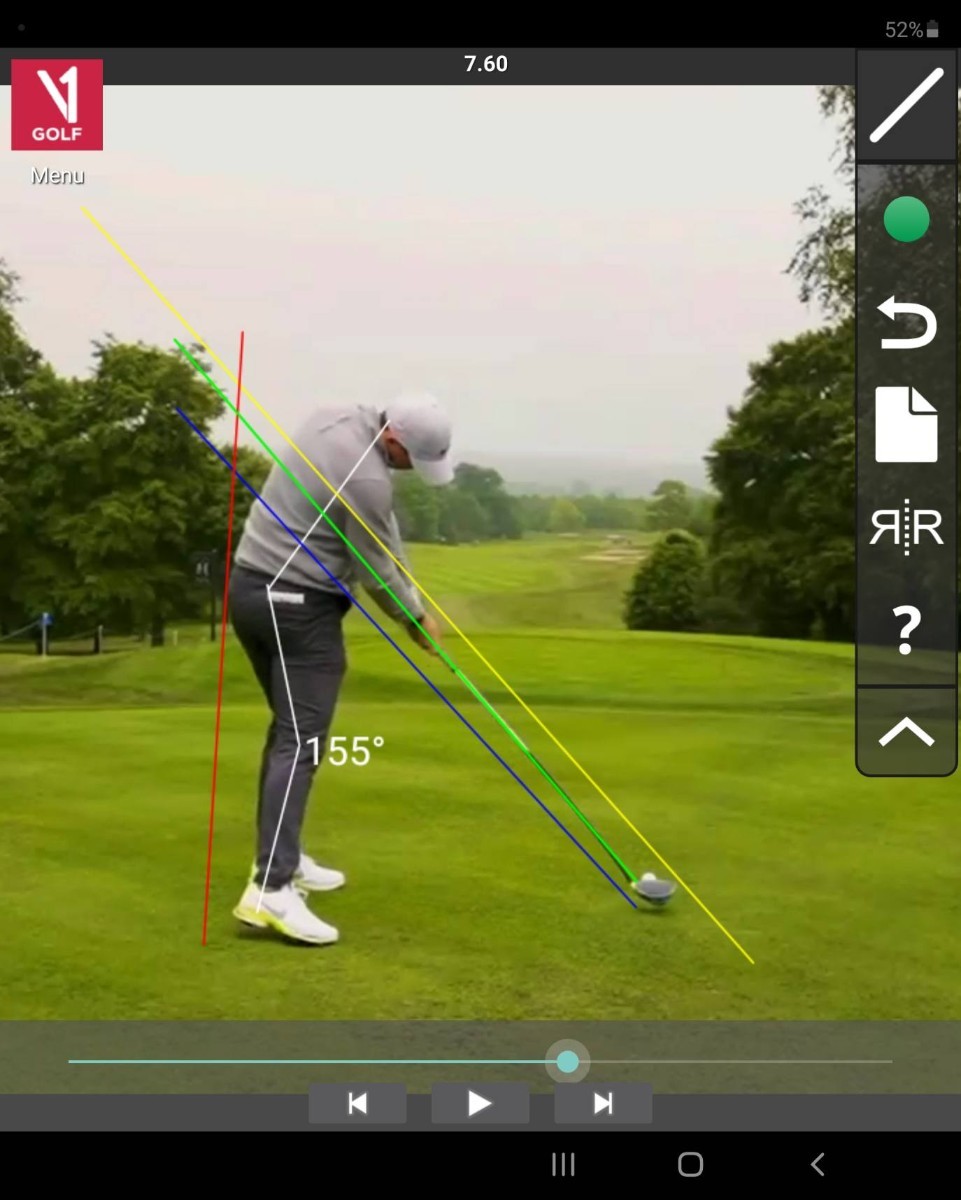-
Posts
45 -
Joined
-
Last visited
Content Type
Profiles
Forums
Articles
FAQ
Tests
Classifieds
Store
Group Buys
Everything posted by Scientific Golfer
-
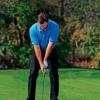
2024 Masters Pool Sponsored by Titleist and Vokey Wedges
Scientific Golfer replied to Golfspy_CG2's topic in Deals & Contests
Cut: +1 Low Amature: Stewart Hagestad -
The quality of the instructor(s) is often more important than the format. If the instructor(s) aren't providing information that's sound it won't help, or could even hurt your game. As others have said the clinic may be structured around a particular topic, but even if that's the case the instructor(s) may let you pick their brain or help you with other topics than the subject at hand. 1-on-1 the instructor will observe all if not most of your shots, and may give you a handful of ideas and concepts (perhaps too much depending on the instructor), on the flip side with instructor(s) spread across multiple students give you time to practice what you're working on without feeling like eyes are analyzing you every shot.
-

2023 My Golf Spy U.S. Open Pool
Scientific Golfer replied to Golfspy_CG2's topic in Deals & Contests
+6 92 The highest score will likely come from one of the non-tour pros (an amateur that qualified to play this week). -

2023 Masters Pool Sponsored by Vokey Wedges
Scientific Golfer replied to Golfspy_CG2's topic in Deals & Contests
1st Tie Breaker What is the Cut Number : +3 2nd Tie Breaker -What will be Tigers Score after the 2nd round: I'd like to say Woods will play so bad that he fakes an injury and withdraws, but instead I'll say he shoots an 80 in the second round....making him +10 through two rounds. -
Not all clubs that appear on the conforming list are released, and even when they are, not all are released in all countries, or to the public. We'll just have to wait and see what Callaway officially releases when they are officially announced.
-
#1: Someone earlier in the thread used an analogy of a car breaking, or slowing down, and how if you had an item loose on the seat how that item would fly or slide off or across the seat (depending in the amount of force). That is a good example of how energy from decelerating hands would transfer to the shaft. If you're riding in a car and the breaks are slammed on you are going to get propelled forward with a force that is relative to how fast the car was moving, and how quickly the car slowed down and stopped. If you weren't wearing a seat belt you'd be in trouble when the car decelerates. #2: Get in your golf setup, and get in a spot where you can see your swing from downline (mirror reflection, window reflection, or record yourself (or have someone else record you). Swing up to the top of the swing. From the top pull downward using your left elbow, left shoulder, or both (no right shoulder, or elbow pull). What happens? (Likely you will the shaft steepen, the hands/handle will lower while the club stays high, and the hands, arms, and club will rotate counter clockwise which will close the clubface. Thd club likely to be moving out to in if the shoulders/chest/torso or other body parts start rotating open). Heel of the club more likely than toe to contact the ground. Now go back up to the top again. This time use just your right shoulder, right elbow, or both (no left shoulder or elbow pull). What happens this time? (Likely you will see the the club shallow/flatten, but not in a good way, the hands/handle will stay high while the club head gets low. This often leads to high hands that move away from the body into impact (shank very possible from here) and a vertical shaft at impact. Not good good for clubhead turf contact. Toe of the clubhead more likely than heel to contact the ground. This downswing the body is more likely to stay turned away from the target better/longer and you may get more of a path that goes from in to out. Now go back to the top again. This time have both shoulders/elbows lower at the same rate as each other. This will lead to a more neutral lowering, and won't have to result in countering for extremes that the other two single side pull downs can create. This neutral lowering may lead to the elbows maintaining their distance from one another better than the other two pull down methods where the elbows distance from each other may increase. #3: Greg Norman said him and Butch Harmon liked him staying flat footed through impact as that allowed to his hips to make a more rotational movement and a more shallow low point to the club near impact. The higher rear heel will lead to more tilting, a more steep glancing V shaped impact where low point control is more inconsistent. Nick Price said keeping flat footed helps you stay in balance, and can also keep your hips from spinning out. Nick Faldo said the foot coming up could lead the legs being too active the hips stalling, loss of posture, early extension, loss of stability, and increased inconsistency. While Ernie Els had occasions where his rear heal would be significantly elevated at impact he too played his best golf while being flat footed near/through impact. I remember Ernie setting a four day tournament record on a week were he was flat footed at impact. (I think it may have been during the Johnny Walker Classic). Rear foot staying grounded means more stability and more consistency. #4: The shaft returning close to its original plane at impact can have a number of benefits. It can be more consistent then the high hands position. If you look at some of the things that cause high hands: rear foot coming off the ground, early extension, chest and arms raising up (becoming more vertical) coming into impact, hands and arms moving out and away from the body on the downswing you have a list of things that produce inconstancy, and are found commonly in unskilled high handicappers. It's far less common in highly skilled elite golfers who are known for their consistency over long periods of time. While there are occasionally times where some players who jump out of their shoes, overdrive their legs, tip and tilt excessive manage to have occasional acceptable shots when they compensate and time those compensations right they contend far less than then players that are more stable. (Often times their putting is what keeps those inconsistent golfers in brief contention). I believe Bradly Hughes (former Tour Golfer and current instructor) had written a book and articles about the benefits of returning to a similar plane at impact to the address plane, and gave a list of skilled Tour Pros who golfed that way. #5: Yes, aside from the Athletic Motion Golf guys all the other instructors that were mentioned advocate the body being the support for the swinging of the arms and club. While the Athletic Motion Golf guys off and on promote using the body in some way (in order to live up to their group name) they often advocate and demonstrate hitting balls while on their knees (taking the body out of the equation), and have done videos on how the hands/handle/arms are the fastest moving thing from the top of the swing down to hip high. In the TPI 3d golfer models it shows the point at which each segment peaks (and then right away begins decelerating). Like the car breaking and the results on the objects inside analogy each break and deceleration can cause a transfer of energy to nearby objects. The human body (muscles) don't work like rubber bands. Wind up in your backswing as much as you can (without hurting yourself), and then just drop the tension in those segments that felt like they were stretching. Did they snap back automatically with force and speed like a rubber band? I suspect not, and I suspect they moved very little from the tension point to the relaxed point. As others have mentioned the time it takes from the top of the swing to impact is too short to not only think a swing thought, but to do it as well. That's why you see a lot of the biomechanically studied previously mentioned instructors advocating reversing / transitioning the swing long before the club reaches the top of the swing. If you look at the changes between one of the 3d model posed positions and the one following it do you think you'd have time to think about and execute a movement between those two positions. If you can't do one in that time period how do you expect to do three to four that comprise all of the movements in that time frame of less than 2 seconds (entire swing), or less than 1 second (time from top to impact)?
-
Attached are some images of Rory Mcilroy I put in swing analysis video software and drew lines for reference. First is the setup image for general reference when looking at how later positions relate. Of particular note is the red line that runs roughly along the edge of his rear end / hip. When Rory reaches the top of the swing his hands, and right forearm touch this red line. When Rory starts down his hands, grip, right forearm, and right elbow lower straight down the red line. (Ernie Els also advocated lowering the right elbow to the right side in his How to Build a Classic Swing book, and said Byron Nelson did the same). (Some people may think this is the same picture as the previous, but if you look closely you will see the shaft has flexed more, the grip has lowered slightly, and his legs/hips have lowered/squatted/flexed slightly) Also of note his right hip is staying back on the line. In the early downswing (prior to left arm parallel) the hands, arm, and right elbow continue to travel straight down as shown by them staying on the red line. (The right hip also remains on the red line). In the next image the hands and arms have started to move away from the red line. The hands are moving away from the right shoulder which is remaining back, and as a result the right arm is straightening. The shaft is coming down steep in this early downswing disproving the people who say that clubs shallow right away from the top, or in the early downswing of elite golfers. At hip high in the downswing the hands continued to separate from the rear shoulder, and the arm continued to straighten. The shaft has returned on to the blue plane it was on at address. This is the point at which 3d systems and sensors start reporting the hands decelerating in speed, and the club shaft is loaded, so that it will do the work and energy will transfer through the shaft into the head to create clubhead speed. If people instead are trying to accelerate or maintain hand speed they will not transmit energy to the club, and will never reach their maximum potential for clubhead speed. Also of note is how low Rory's rear foot has stayed to the ground. Much like how Greg Norman, Nick Faldo , and Nick Price all did when they were playing their best. In the final image we have an impact position. The rear arm continued to straighten and the hands continued to separate from the rear shoulder. If the right hip had stayed back closer to the red line the hands and club shaft would have stayed on the blue line and would be near it still at impact. If you look at images where Sergio Garcia, Ben Hogan, and at some times Nick Faldo and Nick Price arrived with hands and shaft on the same plane at impact as they were at address you will find that their rear hip has stayed back. The more the hip has moved away the higher the hands are at impact. (Ernie Els is an example of someone whose hip comes out, and hands get high). If you look at many of the iron shots Mcilroy has hit when he's been playing his best you will see his back foot staying flat on the ground through impact. Having the hands lower and accelerate right from the top while the body is less active (followed by hand deceleration around hip high down) is what you'll find advocated by instructors like Mike Malaska, Tony Luczak, Stuart Small, and the Athletic Motion Golf guys (Shaun Webb and Mike Granato) and a lot of other good modern teachers. (It's also a style of swinging that was advocated by Manuel De La Torre). This recently posted video by Michael Jacob's showing energy building in the hands and elbows and transferring to the club head.
-
I mentioned the issues in the beginning of the original post, but to reiterate: In the early part of backswing the club gets flat, laid off (whatever you choose to call it). At the top of the swing the the club is deep behind me and crosses the line (and often goes past parallel). On the way down the body (torso and hips) are way ahead of the arms and club, and the arms are dragged by the slow moving body. At impact the spine is very right side tilted, the right/back arm is very bent and cramped into the body with the body turned more open then it should be at impact. All these flaws lead to swing variation, lack of speed, and far too much effort for very little power. Far from the efficient swings seen by the likes of Adam Scott, Justin Rose, Ernie Els, Nick Faldo, or Rory Mcilroy to name a few. None of the teaching pros i've worked with after developing these flaws have been able to provide me with instruction that has lead to any significant change when it come striking the golf ball. I can video my swing before and after the lessons and there is no apparent change. While some instructors may have sound concepts others go off on tangents teaching concepts that don't adhere to the logic of physics and biomechanics. Just because someone may have PGA or other credentials doesn't mean they are good teachers. Concepts I have tried include, but are not limited to : Swinging with the clubhead staying outside the hands (at least until hip high back). Swinging the grip close to the back leg during the takeaway. Keeping the clubface facing the ground longer. Pointing the thumbs up at the sky at lead arm parallel back. Keeping the left elbow pointing to the body or the ground (in an attempt to keep the upper arm from rotating). Tilting the shoulders on a steeper plane during the swing (to try to keep the arms in a position more in front of the torso). External rotation if the back arm (in an attempt to keep the rear arms on front of the chest so that it can't separate as much at the top and so the arm doesn't have to work to get back in front of the toros on the way down, but opens the clubface and rolls the arms. Pulling the right elbow into the side on the downswing (which creates the flaws of having the arms and club open, the hands get high and move away from the body, the club gets steep and too upright creating another poor impact position. I could go on with dozen of other thoughts, positions, and movements i've tried, but that would make the post much longer. I've come to the decision at this point that my best bet would be to find things that will put my in sound positions every single time, and grove that position/movement through repetition. Thus that is why i've asked for suggestions on training aids that will force me into good positions and motions.
-
Growing up I spent a lot of time copying the way Jack Nicklaus and Greg Norman setup and swung. I was very much a hoverer of all clubs, but after years of studying and using other methods I got into a habit of grounding my clubs. There are a lot of benefits to hovering, and your post makes me think it would benefit me to go back to the hovering style using focus and repeation to I grain them again.
-
I don't get where you got the idea that your angle of attack and downswing are too shallow, and even more so that they are causing you fat and thin shots. I can post slow motion swings of Rory Mcilroy and Sergio Garcia with similar shaft positions to you on the downswing. If anything I'd say (like some of the others that posted) that posture changes are what is causing you problems. They aren't drastic, but over all it looks like your legs have some overactive movement during the backswing (which causes the posture to change), that your back foot gets off the ground sooner than necessary on the downswing and your legs and hips underneath you and towards the target line, and causes your belt line to go from the diagonal at setup to very horizontal at impact.
-
Thanks for coming on here and chatting with us. I used to be a master club fitter for a company, and it was disappointing to hear many of the misconceptions and myths people had when it came to golf equipment and fittings. I think people on this forum could really benefit from dispelling some of the misconceptions and myths out there. I'd say dispel any myths or misconceptions you guys encounter on a regular basis, or that you think people would really benefit from having explained. If nothing pops straight to mind how about touching on things the following misconceptions I've heard: "I'm a fast swinger (person's own opinion), and my buddy (hacker playing partner) says I should get extra stiff shafts", or on the other end of the spectrum the guy who maybe a senior and says he was told he should be getting senior or woman's shafts by his uneducated playing partners. (How more flexible can relate to high, and stiff to lower ball flights. How stiffer doesn't mean straighter, and more flexible doesn't mean more side to side dispersion) Maybe touch on how launch and spin is more important than swing speed when it comes to choosing shafts. Maybe touch on the importance of angle of attack on shaft selection. Maybe touch on how torque is related to feel, and with modern shafts it has little baring on dispersion (aka higher torque doesn't mean spray more shots). I remember people having misconceptions on graphite vs steel when it came to consistency, duribilty, flex, etc. Perhaps talk about some of those misconceptions or myths. Thanks again!
-

Club Champion vs Golftec: My Experience
Scientific Golfer replied to tchat07's topic in Member Reviews
Thanks for sharing your experience. With regards to your question of why certain clubs felt awful one day and worked well the next I think there were numerous contributing factors. I definately think having different shafts in the heads can make a big difference on feel and perception. We don't setup and swing the same every day (but do have tendencies), and that also could have been a big factor. The swing weight of the head and shaft combo as well as the weight of those specific test heads could have been different. Finally, like you suspected what you suspected about them being different clubs from the set 8i vs 7i vs 6i could have been a factor. You didn't mention it, but did they fit you for lie angles at all locations? How did the place you bought from fit you (did you go in somewhere and get fit, or was it a by paper fitting based on your previous fittings and stats) ? -
https://www.google.com/amp/s/www.golfdigest.com/story/this-is-a-robot-it-can-also-te/amp At $150,000 it's out of my price range, and something else I'd be curious to know about it is how it knows how to swing like particular pros. It would be one thing if said pros swung while using the device, and the device records them. Can pretty much guarantee that the device wasn't around when Ben Hogan (one of its apparent swings) was, and even if he had been he didn't seem like the type of person that would have wanted it recording him. If it's taking positions from videos the camera angles/positions of the swings can have a huge effect (be flawed) on said angles, positions, and movements. Has anyone on here ever had the benefit of trying one?
-
I prefer reading instructional books when it comes to golf. I've got two entire book cases full of them, plus three stacks of books next to my bed. I'm more apt to re-read ones that I have then buy new ones, for the sake of having something new. I'd say in general I've recommend books written by those known to be some of the best players in the world (Faldo, Price, Els, Norman, Hogan, Elkington, etc), or the instructors that taught them (Butch Harmon, Rick Smith, Leadbetter, etc) over less establish people. My favorite book and one that I am reading again right now is Nick Faldo's Golf the Winning Formula. It was published back in 1992 when Faldo was at the height of his playing career, and it's an excellent break down of all parts of playing the game. It was an eye opener the first time I read it. I was surprised that some of the things he wrote of hadn't been talked about more often by instructors, and players to that point, and even today. Once in awhile another great player or instructor might mention a few of the points lending further credence to the information, but much of the information is still a secret from those who have not had the benefit of reading the book. It details the reasons why he would setup and swing, chip, putt, etc the way he did, and pitfalls people (including pros and non-pros alike) are likely to encounter if they are instead getting in some of the positions and making movements that have at one time or another been advocated by other people playing or teaching the game. If anyone's debatinging reading a particular instructional book, but wants a second opinion post here, and if it's one of the books in my library I'll share my thoughts on if I'd recommend it or not, and positives or negatives of it if you want that information. PlaidJacket, the Magical Device book is not among those I've read. If you find it worthwhile let us know.
-
Thanks for the recommendation. If I'm looking at the correct thing the Chilliwacker appears to be a device where you swing, and if you are way off plane you wack the device. It doesn't look like it does anything to teach you how to get in the correct position, nor give you a feel for the correct position or movement. I'm looking for something that is more likely to train the right movement instead of creating negative reinforcement when a bad move is made, but I'll keep it under consideration.
-
I've been to lots of instructors, and unfortunately none have given my information or been able to resolve/improve my issues during the lessons. With the current stay at home order in person golf instruction is out of the equation, and online would be problematic in that it becomes a case of who would I choose, and what guarantee is there of said person being able to give me information that will work. Also at this time I don't have a hitting net to hit into in my backyard (ordered one recently, but probably won't get it for a week) . As proven on video, with a swingbyte device, and Zepp device my practice swings and actual swings hitting a ball are very different swings. (Which is of course very annoying). After getting a net, and setting it up I'll re-evaluate the online lesson option if I haven't found another solution. Thanks for the advice, but looking up what the Tour Striker Planemate is (an exercise tube connecting a belt to a low part of the shaft) it doesn't look like it would teach me how to make a proper backswing, and if anything looks like the resistance tube will encourage pulling the club lower and deeper behind the body. None the less thanks for making a recommendation.
-
Thanks for the suggestions. The wall think doesn't particularly help since it's not going to show my how to avoid the wall, and damage us likely to occur to the club when it would not the wall. Plus the club has to go back to some degree. To avoid the wall completely one would likely need a purely lifting manipulation and no turn. Even if I did do that I feel like I'd be trying to replace one fault with another. I'm a member at a country club , so I have access to a grass driving range (except right now with it closed and the government order to stay at home). I have a PVC pipe circle training aid on order (hopefully I'll get it in about a week) in the hopes that it will help me feel what the correct position/movement feels like, and possible groove it through repetition. Thanks for your input.
-
My swing flaws include taking the club back where it's very laid off behind my body by the halfway back point, then I get extremely across the line and sometimes past parallel at the top. At impact my upper body has a large amount of side bend giving a very cramped look with an unpleasant amount of right elbow bend. I recently picked up a Tour Striker ball like inflatable ball attached to a lanyard that is supposed to encourage arms / elbows to maintain their distance apart during the swing in the hope that the maintaining of elbow width during the swing would/will eliminate the across the line / past parallel issue. I'm looking for other aids that might help train out my flaws during the boring Stay at Home government orders. I've been contemplating the TPro device thinking it might reduce potential arm torso separation in the backswing, and possibly encourage right arm extension into impact (pushing the band away from the body. https://gravityfit.com/golf Anyone ever use the device, and would you advocate it? Any other devices you guys would recommend to work to eliminate the flaws previously mentioned? I'm a fan of aids that put you in correct positions, and give you a feel for what the correct positions or movements feel like (ex: Butch Harmon right grip golf gloves). I extremely dislike things that tell you to swing around/ between objects but don't put you in those positions, nor have any scientific support for why you should be making those movements/positions.
-
Tier 5: Ernie Els -5
-

#SpyStaffSlam: 2019 PGA Championship
Scientific Golfer replied to STUDque's topic in Deals & Contests
I'll go with Charles Howell III for tier 5 and -5 for the tie breaker. BTW: Someone might want to edit the copy/paste that reads the winner will be announced the week after the "masters" unless it's going to take nearly a year to determine the winner of this. -

2019 #SpyStaffSlam: The Masters - Sponsored by Wilson Staff
Scientific Golfer replied to STUDque's topic in Deals & Contests
I voted for my tier 1-4 players. Since it doesn't look like Fred Couples is in any of those tiers i'll make him my tier five vote. As for the winning score for a tie breaker...even though the course is going to play soft i'll say - 280 (aka -8)




